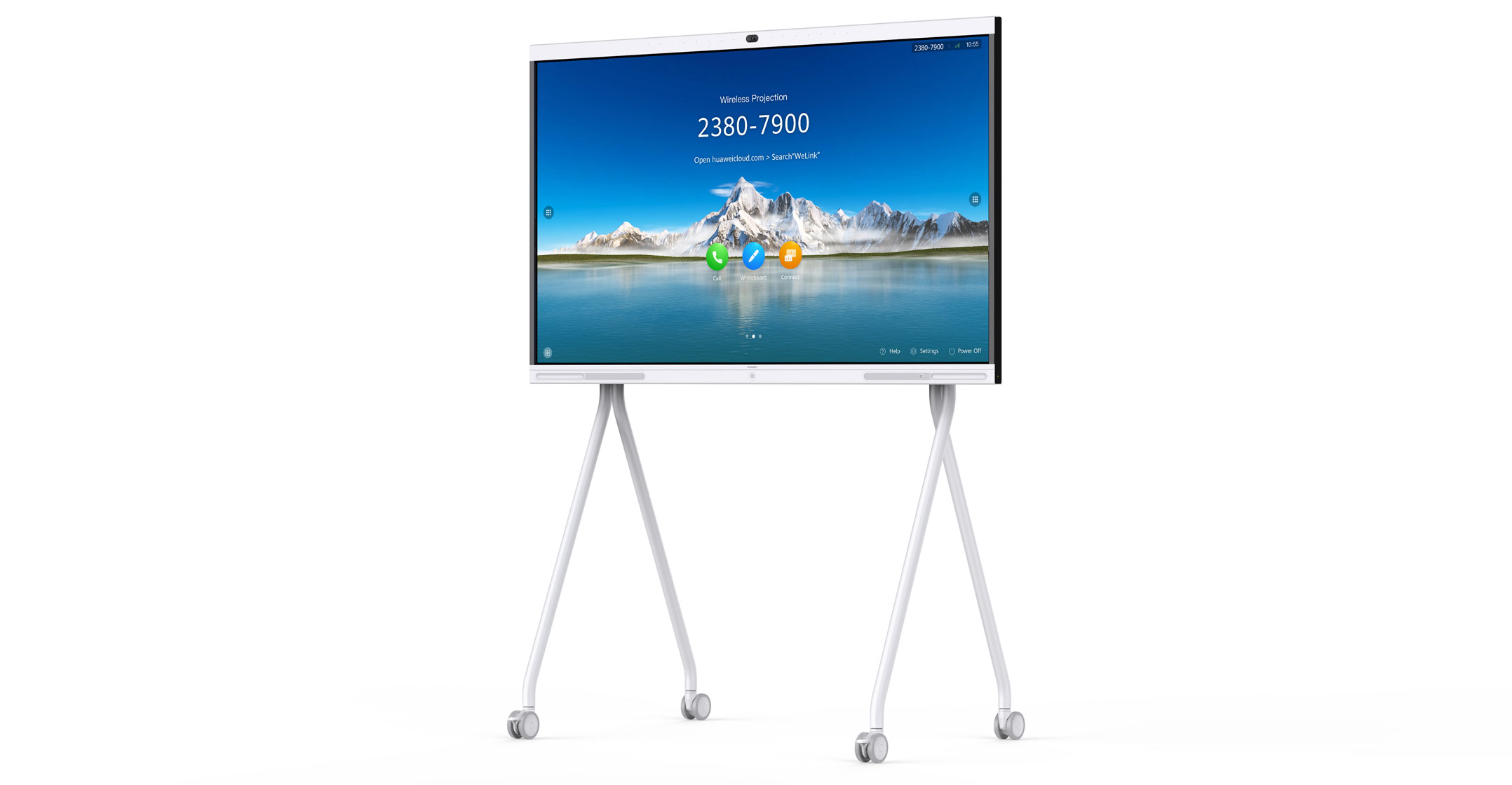 While remote work and learning did exist before 2020, Covid-19 highlighted the need for colleagues and classmates to share resources, collaborate and learn from anywhere.
While remote work and learning did exist before 2020, Covid-19 highlighted the need for colleagues and classmates to share resources, collaborate and learn from anywhere.
Concepts like “the office” or “at school/university” no longer exist in the sense that they used to. They aren’t the centralised, daily locations of collaborative working and learning they used to be – health and safety considerations haven’t allowed for that. Add the cost of real estate (or flights and accommodation) to the mix, and the incentive to decentralise is even greater.
You don’t even need an office
“Huawei’s IdeaHub range, from the business-focused Pro version to the more cost-effective learning-centred IdeaHub Edu, means learners, students and employees don’t have to be on campus or at head office to function as a seamless part of the team. In fact, you don’t even need an office. The technology eliminates the distance between people so that offices and classroom are simply an IdeaHub away,” says James Nel, Pinnacle’s Huawei product manager. “IdeaHub isn’t just another videoconferencing device. It’s about remote, smart collaboration.”
With a focus on simplicity, elegance and ease of use, IdeaHub’s sleek, professional design makes it ideal to bring people together virtually in the office, boardroom or classroom. It incorporates intelligent handwriting recognition, 4K, 60 frames-per-second UHD projection, video conferencing and open office applications. Huawei’s IdeaHub series is well geared for smart applications in lecture rooms, classrooms, meeting rooms, open office areas and even home offices.
Bridging the digital divide
Nel points to South Africa’s wealth gap and explains how technology like the Huawei IdeaHub can help to close it. “People think there isn’t enough education available in South Africa, but actually there is — there’s just not enough access to education. In Gauteng we have Sandton on one side of the M1, and Alexandra on the other. The first place this becomes apparent is in the classroom,” he says.
“While teachers and parents all aspire to join expensive Sandton schools, in Alexandra there are South Africans who still have to make do with very few resources. If you put the IdeaHub in a school in Alex, with literally no extra effort you can negate socioeconomic split and deliver the same education (with access to the same learning resources) to the township school,” says Nel.
The device allows for intelligent collaboration in the remote classroom, giving the learner the experience and level of education desired for all South African learners — without needing teachers to be present in every learning location.
“While learners have massively divergent experiences and quality of education, they all aim to achieve the same qualifications and enter the same tertiary institutions and job market in the end. We have to connect those who can’t to those who can, to give the same education, as far as possible, to everyone,” says Nel. “That way we can help them reach the same milestones of educational advancement student, and hopefully become economically active citizens as soon as possible.”
For our schools and universities, there are three categories of challenges we must help them overcome.
For teachers:
- Pre-class preparation: Limited course materials make it hard to preview classes.
- In-class teaching: A lack of interactive teaching methods.
- Assessments: Score-based assessments are unable to evaluate the student’s learning process.
For learners:
- Learning mode: Students are limited to conventional classroom learning and are unable to participate in live online lessons.
- Learning resources: Few learning resources, limited to teachers’ competence and textbook resources.
For the institution:
- Teaching evaluation: Teachers’ performance cannot be as easily assessed using paper-based course materials.
- Higher labour costs: Face-to-face class observation requires a large number of human resources.
“The IdeaHub helps to deal with these key challenges without detracting from human well-being,” say Nel. “Often, automation is associated with taking away human jobs. IdeaHub is not about replacing capacity but expanding the resources we have to overcome economic and political differences.
“The resource-sharing aspect is particularly important. There’s no point enabling collaboration and remote teaching without access to similar resources like lesson materials. Ensuring equal opportunity means that educational results are driven more by the individual than the system being used. The wealth gap in South Africa is a well-documented problem, and potentially creates animosity between haves and have-nots.”
In all this, Nel says it’s vital not to concede affordability to create functionality. If the device is unaffordable, it’ll still only reach a minority of affluent learners. This is why the IdeaHub Edu’s price is drastically reduced — without compromising quality. This also incentivises wealthier organisations, individuals and government to subsidise less privileged communities.
The corporate divide
In a lesser sense, this also applies to branch offices or dispersed companies. Branches might feel they don’t get access to the same resources as head office, which can also create feelings of frustration and resentment. “The same applies – you don’t want a geographically created social split between your employees. You need to enable seamless collaboration,” says Nel. “Huawei’s IdeaHub can help to ensure everyone’s pulling in the same direction.”
- This promoted content was paid for by the party concerned




